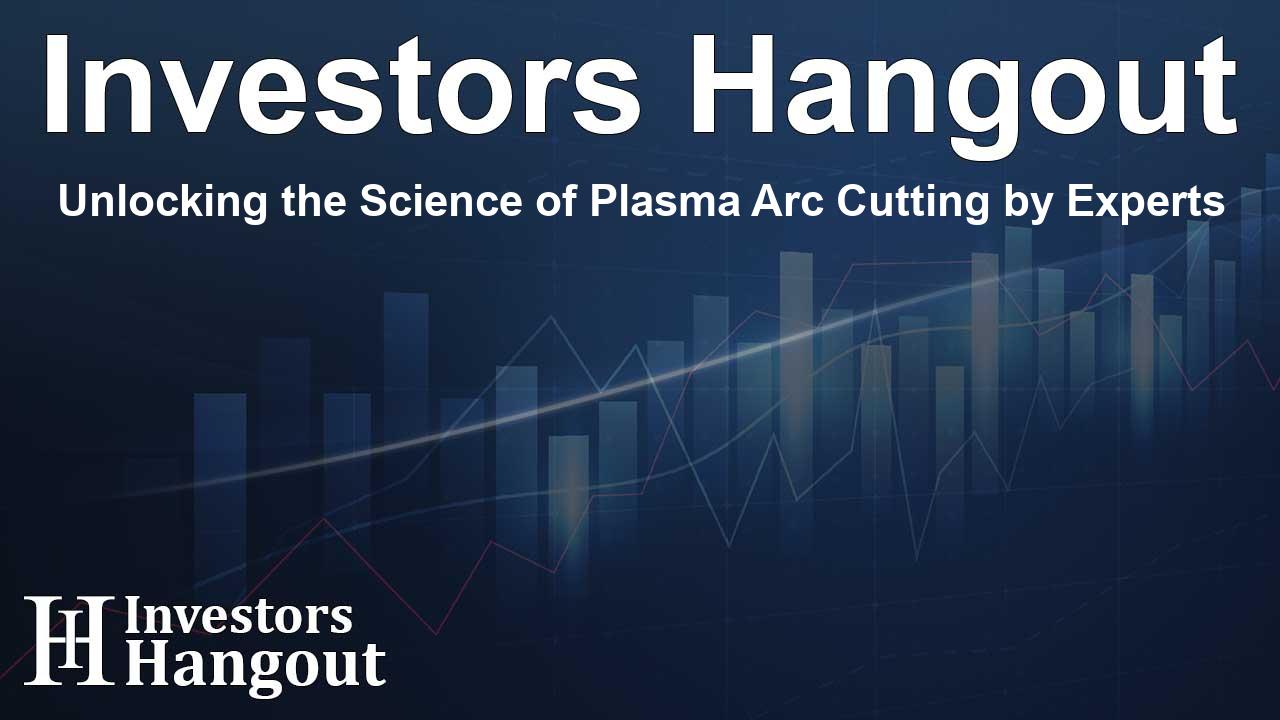Unlocking the Science of Plasma Arc Cutting by Experts

Understanding Plasma Arc Cutting Techniques
Plasma arc cutting (PAC) stands out as a revolutionary thermal cutting method utilized across various sectors, including shipbuilding and aerospace industries. This technique involves projecting a jet of ionized gas at high velocities to melt and eliminate unwanted material from electrically conductive workpieces, particularly metals. The plasma jet is generated by two critical steps: compressing a gas through a narrow nozzle and creating an electric arc using a power supply. This electric arc ionizes the gas, resulting in a plasma jet capable of reaching extreme temperatures. Thus, the PAC process allows for swift, precise, and efficient cutting of diverse metals and alloys.
Significance of Gas Flow Dynamics in PAC
The effectiveness of plasma arc cutting stemmed from multiple factors, such as the type of plasma gas used, the pressure applied, and the dimensions of the nozzle opening. However, understanding the intricate influence of gas flow dynamics on the quality of cuts has been elusive. This is primarily due to challenges in visualizing the dynamic behavior of gas flow during the cutting process, which has hampered efforts to optimize PAC techniques.
Research Led by Dr. Upendra Tuladhar
In their endeavor to decode these complexities, a dedicated research team spearheaded by Dr. Upendra Tuladhar, affiliated with HD Hyundai Mipo, embarked on an investigation into the gas flow dynamics during the plasma arc cutting process. Collaborating with experts from the Korean Institute of Machinery and Materials, the team devised innovative experimental and computational methodologies to visualize and analyze gas flow. The research sought to fill the knowledge gap surrounding the impact of gas motion on the quality of cuts achieved during PAC.
Innovations in Experimental and Computational Methods
The team's groundbreaking work employed advanced computational fluid dynamics (CFD) simulation models to assess how variations in the cutting front geometry influenced gas flow patterns. Specifically, the team sought to analyze the gas flow behavior within the kerfs or grooves produced during the cutting process. They discovered that changes in cutting speeds would alter the shape of the cutting front, leading to unanticipated gas flow behavior, ultimately affecting cutting performance. Further analyses concentrated on deciphering the mechanisms that contributed to these dynamic behaviors.
Exploration of Curved Cutting Fronts
Cutting front curvatures created by high-speed operations were found to generate oblique shockwave structures that considerably decreased flow velocity. Dr. Tuladhar and his colleagues highlighted that weak shock structures at the cutting front gradually reduced velocity, impacting overall cutting efficacy. They emphasized the significance of understanding these dynamics, noting that attaining a critical flow velocity through a highly curved cutting front became a limiting factor in penetrating workpieces.
Verification and Findings of the Study
To validate their simulation outcomes, the researchers meticulously compared numerical data with Schlieren imaging results, which offered visual insights into gas flow behavior. Through Schlieren imaging, they captured light deflections caused by the moving fluid, revealing changes in the refractive index that would typically remain undetected. This innovative technique illuminated the relationship between flow velocity and the kerf structure, leading to a more profound understanding of the plasma arc cutting process.
Moreover, their observations revealed that shear stress lines aligned closely with patterns observed on the kerf walls, solidifying the connection between simulated predictions and real-world phenomena.
Conclusion: A Leap Forward in PAC Understanding
The researchers concluded that their findings significantly advanced the understanding of gas flow dynamics within plasma arc cutting systems. By uncovering the complexities associated with curved cutting fronts and their impact on cutting performance, Dr. Tuladhar's team has paved the way for future innovations in PAC technology. The research not only replenishes the existing body of knowledge but also serves as a catalyst for further studies aimed at refining cutting efficiency and effectiveness in various manufacturing applications.
Frequently Asked Questions
What is plasma arc cutting and how is it used?
Plasma arc cutting is a thermal method used to cut electrically conductive materials by projecting a high-velocity jet of ionized gas, allowing for quick and precise cuts.
Why is gas flow dynamics important in PAC?
Gas flow dynamics plays a crucial role in determining the quality of cuts made with PAC, influencing factors such as cutting speed and efficiency.
Who led the research on gas flow dynamics in PAC?
The research was led by Dr. Upendra Tuladhar, who worked in collaboration with the Korean Institute of Machinery and Materials.
What methods were employed in the study of gas flow dynamics?
The team used a combination of numerical simulations and Schlieren imaging techniques to visualize and analyze gas flow in PAC.
What implications does this research have for the PAC industry?
This research enhances the understanding of PAC processes, potentially leading to improved cutting techniques and efficiencies across various manufacturing sectors.
About The Author
Contact Evelyn Baker privately here. Or send an email with ATTN: Evelyn Baker as the subject to contact@investorshangout.com.
About Investors Hangout
Investors Hangout is a leading online stock forum for financial discussion and learning, offering a wide range of free tools and resources. It draws in traders of all levels, who exchange market knowledge, investigate trading tactics, and keep an eye on industry developments in real time. Featuring financial articles, stock message boards, quotes, charts, company profiles, and live news updates. Through cooperative learning and a wealth of informational resources, it helps users from novices creating their first portfolios to experts honing their techniques. Join Investors Hangout today: https://investorshangout.com/
The content of this article is based on factual, publicly available information and does not represent legal, financial, or investment advice. Investors Hangout does not offer financial advice, and the author is not a licensed financial advisor. Consult a qualified advisor before making any financial or investment decisions based on this article. This article should not be considered advice to purchase, sell, or hold any securities or other investments. If any of the material provided here is inaccurate, please contact us for corrections.
